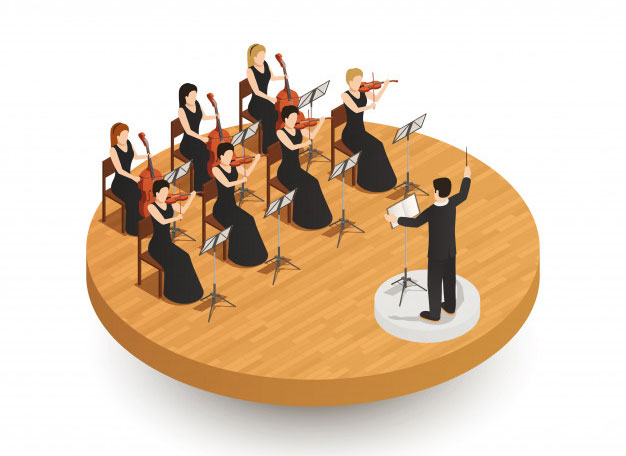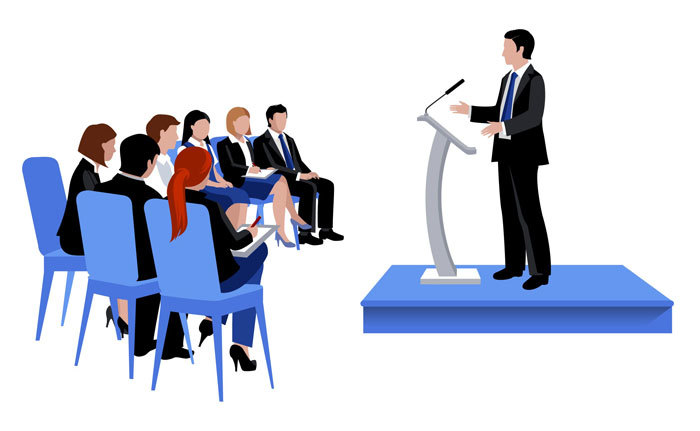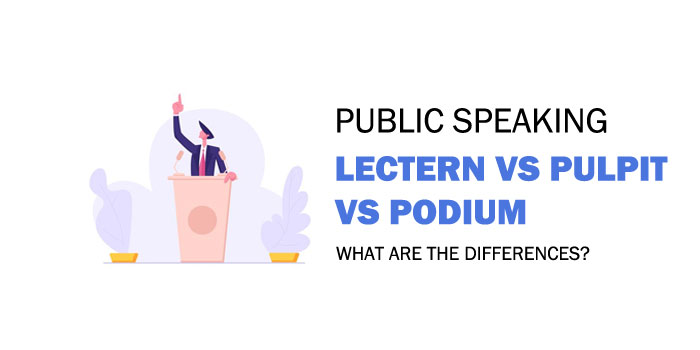Lectern vs. Podium vs. Pulpit: What is the Difference?
When it comes to public speaking, we often hear the terms lectern, podium or pulpit being used but do we know the difference between these terms and how they are used in public speaking?
What’s the difference between a podium, lectern and pulpit?
Well, the dictionary defines a podium as a small raised platform that is used by a public speaker to deliver his or her speech, or the conductor of an orchestra to direct the orchestra.
The word podium is derived from πόδι, a Greek word (pronounced as pothi), which means foot. Other words that come from this source include podiatrist, which is a person who treats feet and any ailments associated with them.

While many may use the word podiums to refer to many podiums, the correct plural for the term is actually podia.
On the other hand, a lectern is defined as a raised stand that has a slanted top that can be used to hold a manuscript, speech or book, at the preferred height for a speaker or reader. Other definitions refer to a lectern as a reading desk in a church, where the Bible rests and from which lessons are read during a church service.

The word lectern, which is sometimes spelled “lecturn” is derived from lectus, a Latin word that represents the past participle of the verb legere, whose meaning translates to “to read.” The word lecture, bears the same origins. The first lecterns were used in religious environments as stands for readings that were given from non-sacred texts.
In other words, if you were giving a presentation or speech, you would stand on a podium but stand behind or at a lectern, when giving a lecture, sermon or speech.
What features do podiums and lecterns possess?
As mentioned above, the height of a lectern can be adjusted, allowing for the different heights of speakers, in addition to having electronic equipment for video and audio presentation.
Many lecterns that are currently being used in different facilities now have plug-ins for computers, iPods or iPads while others even enable the speaker to control the speaker volume, lighting, their PowerPoint presentations and many other settings, using touch screen controls.

A speaker can use both a lectern and a podium concurrently as it allows the audience to see them better, since they would be raised on the podium and they’d use the lectern as a rest for any materials they may be using while presenting.
The conductor of an orchestra can also use both a lectern and a podium while conducting the orchestra. He can rest his score on a lectern and stand on a podium so that the entire orchestra can see him.
Note: Generally speaking, standing on a lectern is not advised!
So, where does a pulpit come in?
In general, a pulpit refers to a raised structure or platform in a church, from which the service is conducted or the sermon is delivered to the congregation.
From this definition, it may be hard to spot the difference between a podium and a pulpit, which may lead to confusion.
However, it may help to know that pulpits used in churches tend to be rather high, and may often require a short staircase to access them. Additionally, pulpits are generally enclosed, which highlights a clear difference between them and podiums, seeing as a podium is basically a low platform that has no enclosures.

A good example of a structure that bears some similarities to a pulpit would be a court witness-box, where witnesses usually sit or stand when providing evidence or giving their testimonies.
Given that the structure of a pulpit is designed for giving sermons, it will most likely have a lectern attached to it.
So what designs do pulpits and lecterns come in?
Pulpits often come in many designs, ranging from traditional hardwood designs that are both durable and elegant to contemporary designs that provide various options to choose from.
Traditional designs can include additional features, such as locking doors, storage shelves and hidden locking casters, which make the pulpit a functional furniture piece that has many uses beyond its use in church.
Additionally, just like lecterns, some of them come with built-in sound systems which include amplifier/receivers which can receive signals and transmit them from wireless or wired microphones, as well as built-in speaker panels.

Furthermore, the contemporary designs as mentioned above allow you the liberty to choose from different materials, with the most popular one being laminate, which is a durable material that has a surface that simulates the look of real wood be it maple, mahogany, oak, and so on.
Other materials that can be used to design lecterns and podiums include plastic, acrylic, Formica and various metals.
Lecterns that are made using acrylics can be made using that one material or a combination of aluminum, wood, acrylic or other metals. Acrylic lecterns often look spacious and light but they are also known to be very durable, which makes them a good option to choose from.
Are there other terms that can be used to refer to stands?
There are a few other terms that can be used to refer to stands that speakers use. They include:
- Dais
This refers to a platform that has been designed to hold more than one individual at a time
- Shtender
This is a simple lectern or frame that has been designed to hold a book, which is mostly commentary or a sacred text. The word “shtender” refers to the Yiddish word for stander.
- Ambo
This refers to a pulpit or raised desk that is used by a speaker to rest books on or support reading notes. The plural for the word “ambo” is ambos or ambones.
- Rostrum
This is a raised platform from which a conductor conducts or a speaker speaks. The rostrum was named after the prow of a warship that was used to ram an enemy ship (referred to as rostra) and was used to mean the raised platform on which speakers spoke on, in Ancient Rome.
Conclusion: Podium vs Lectern vs Pulpit
It is important to make the distinction between a podium, pulpit and lectern, as it may help reduce or eliminate any confusion that would arise when referring to one or the other as you research the different venues and facilities where you have been booked for a speaking engagement.
